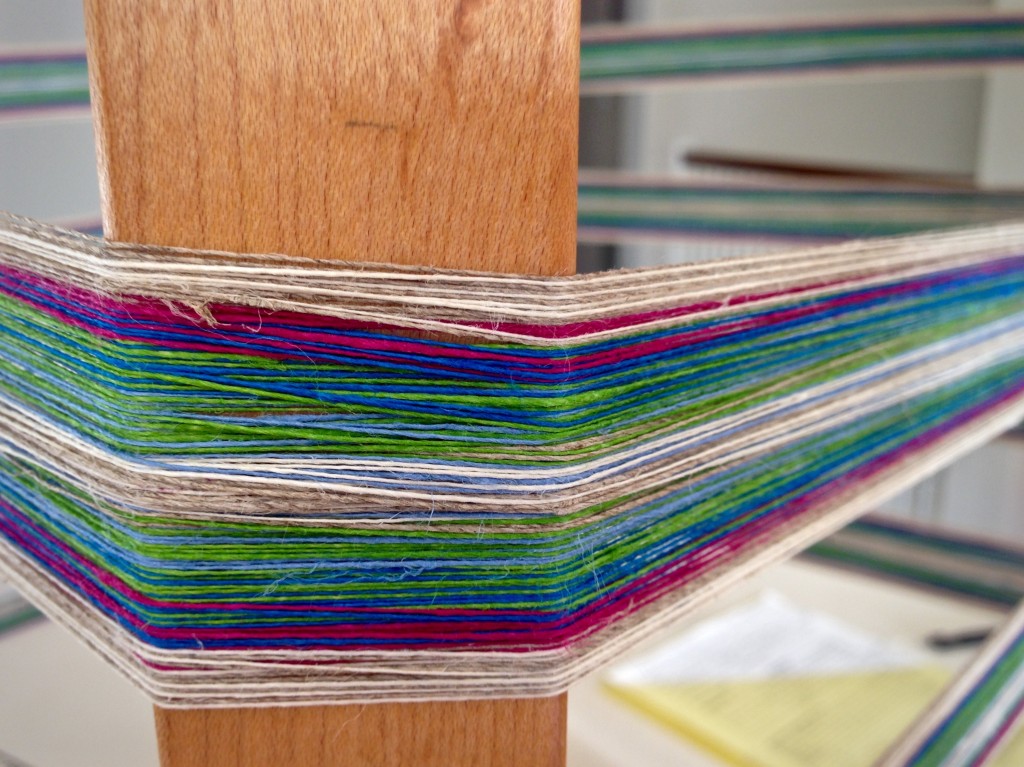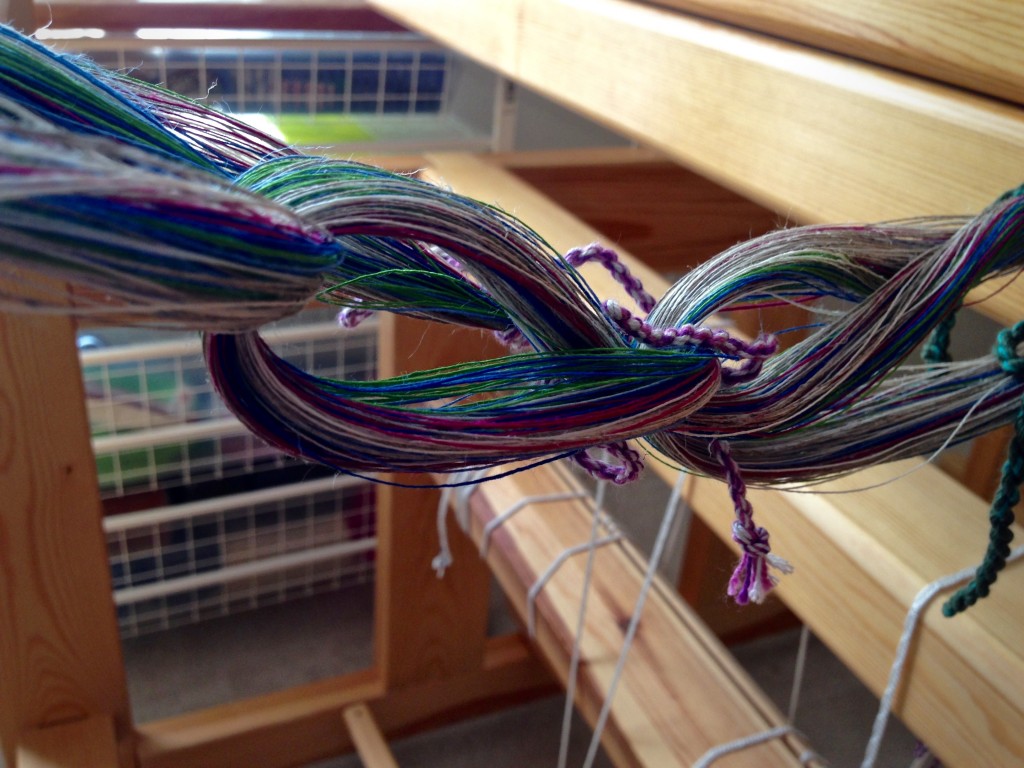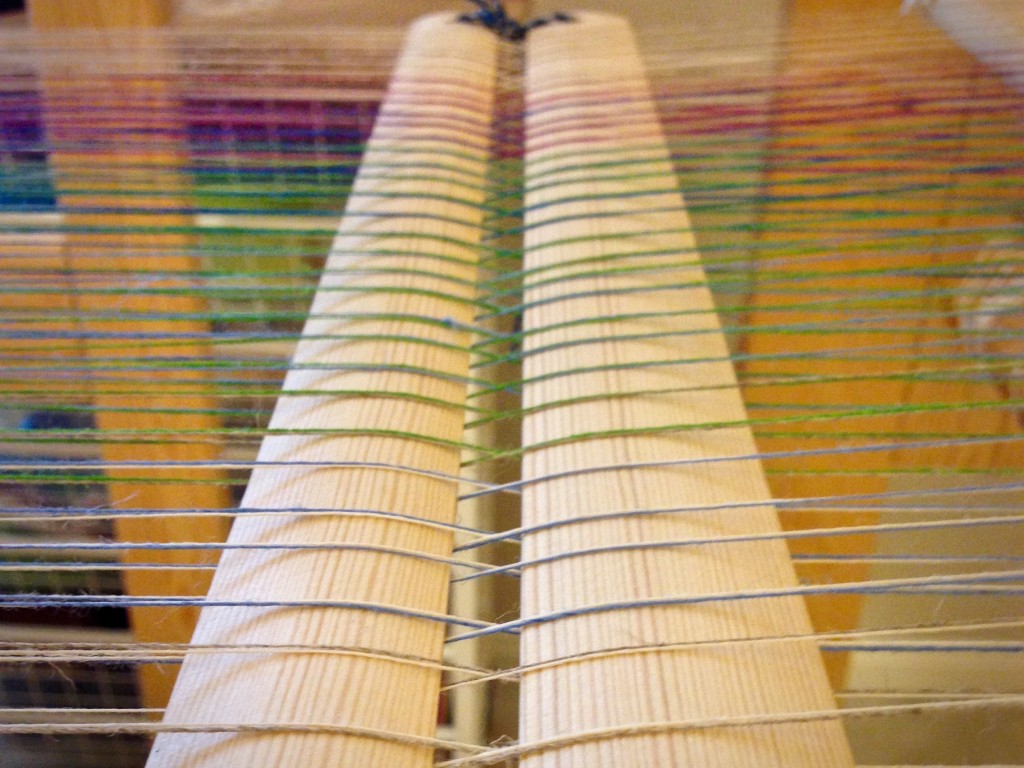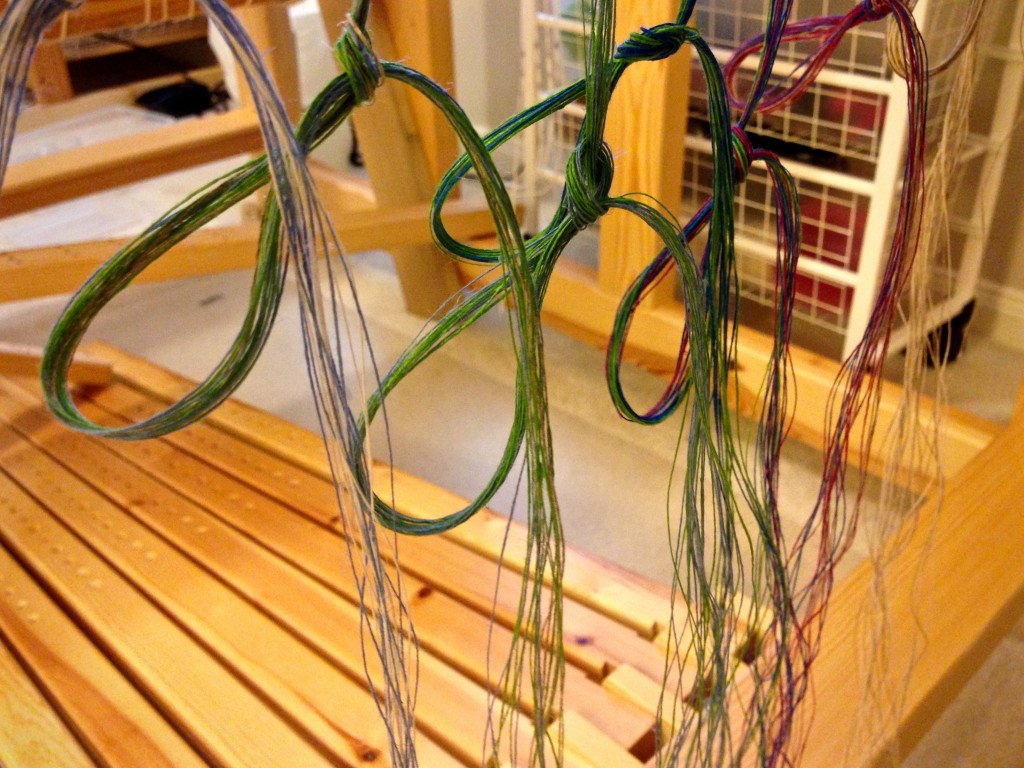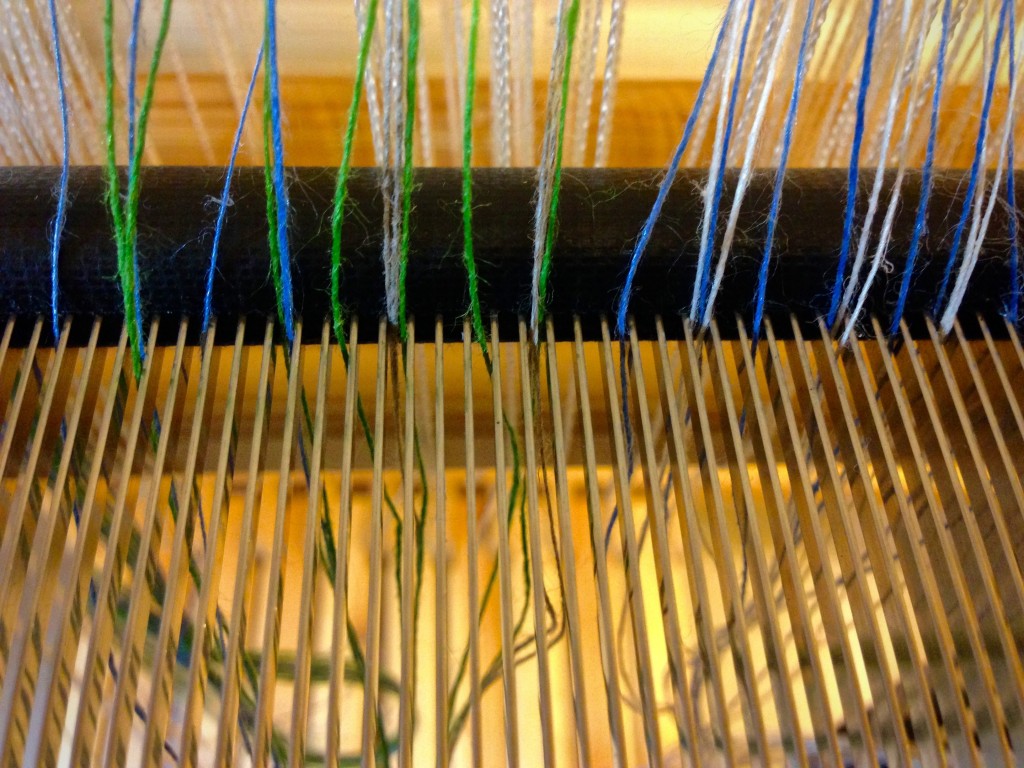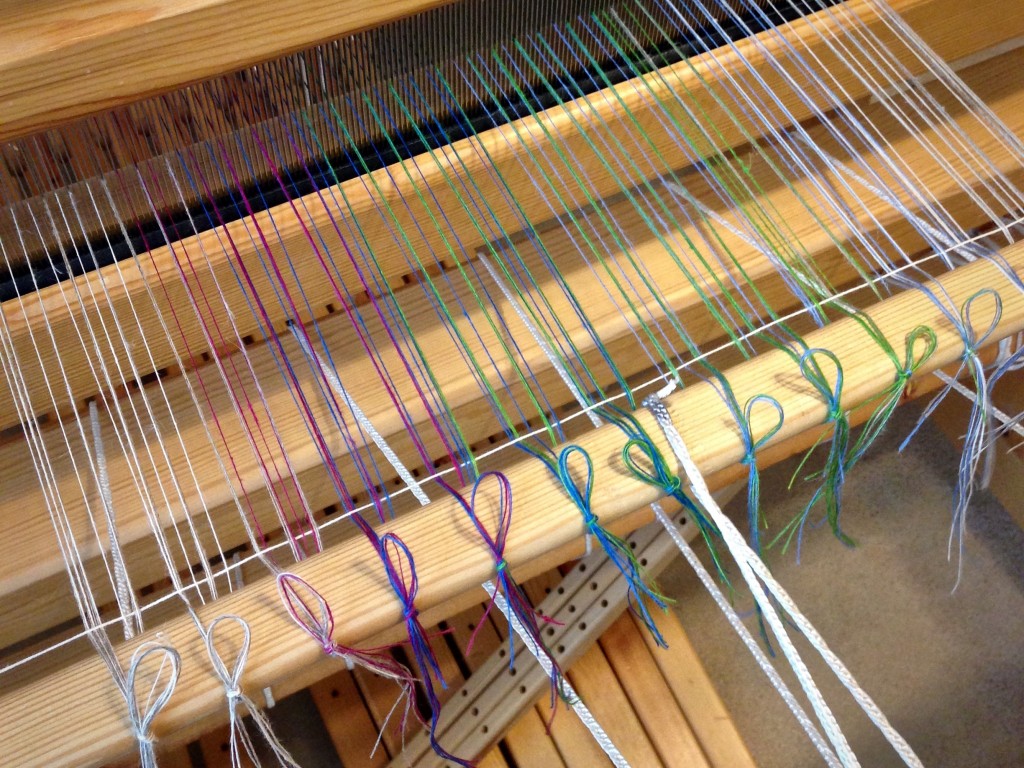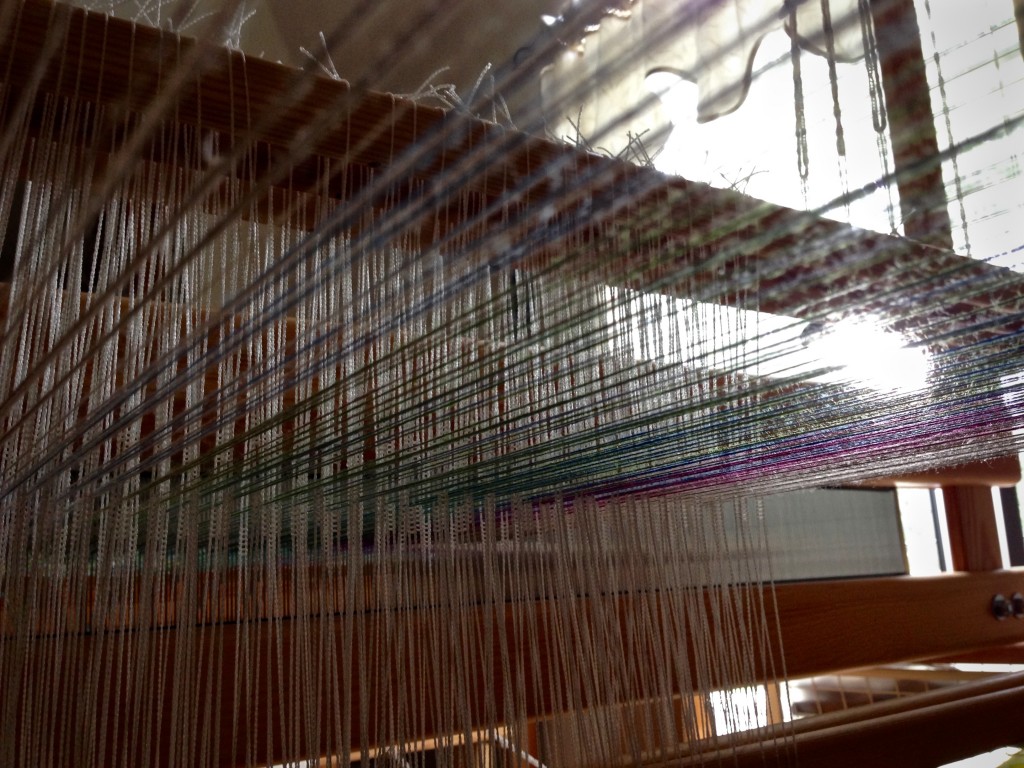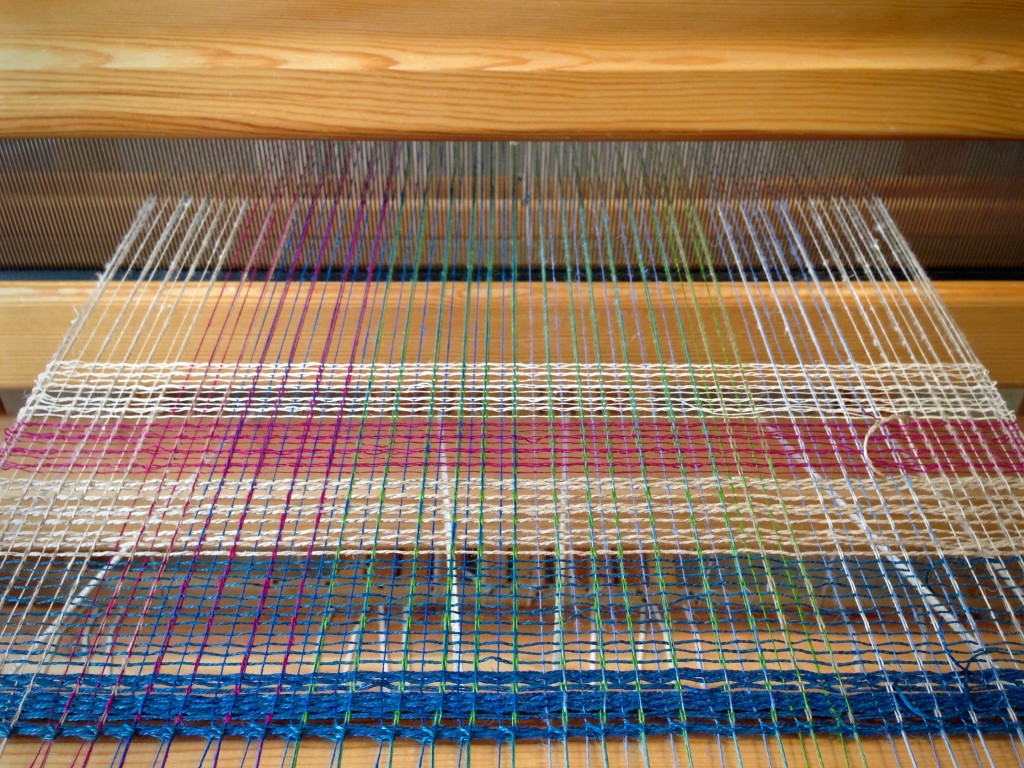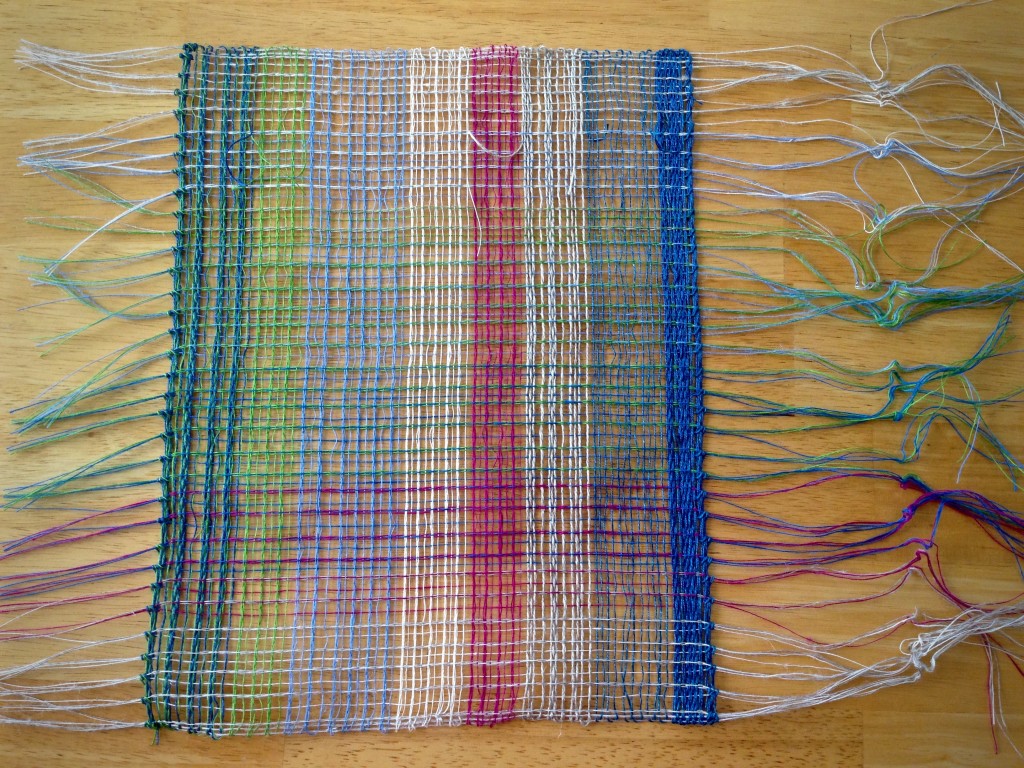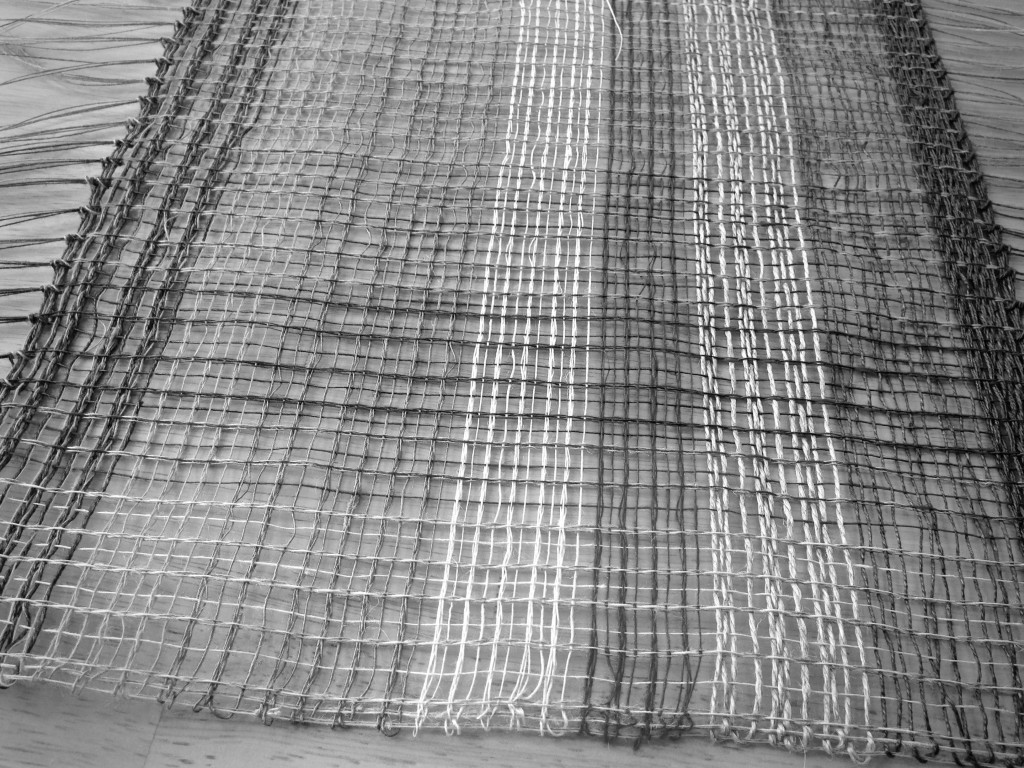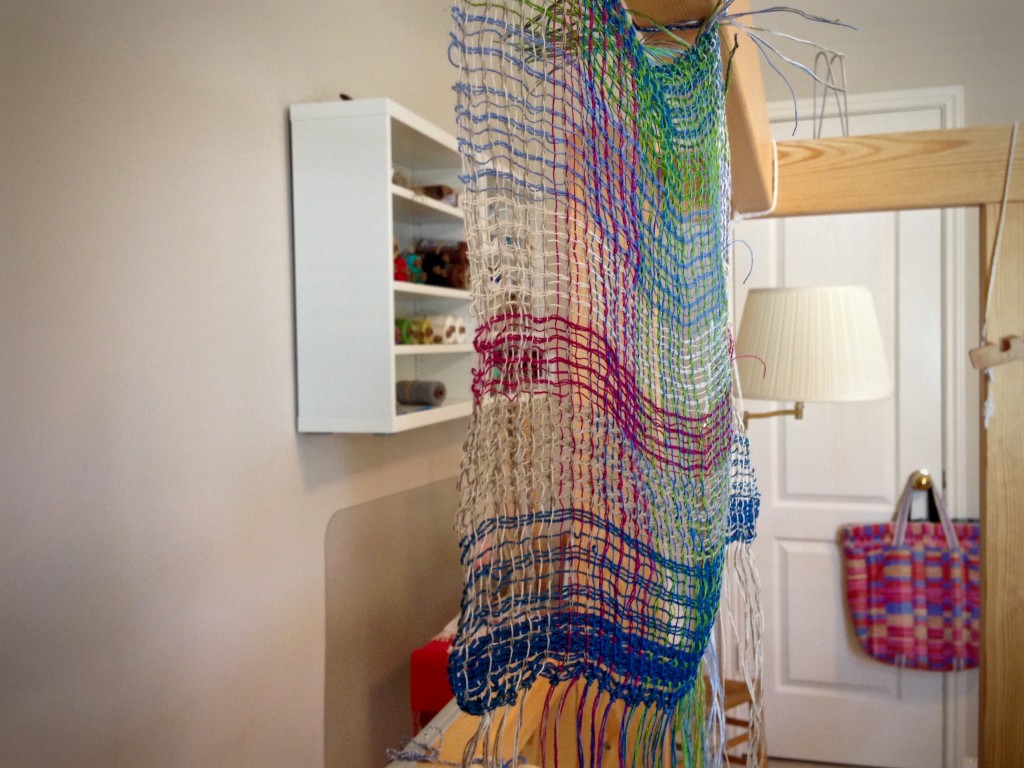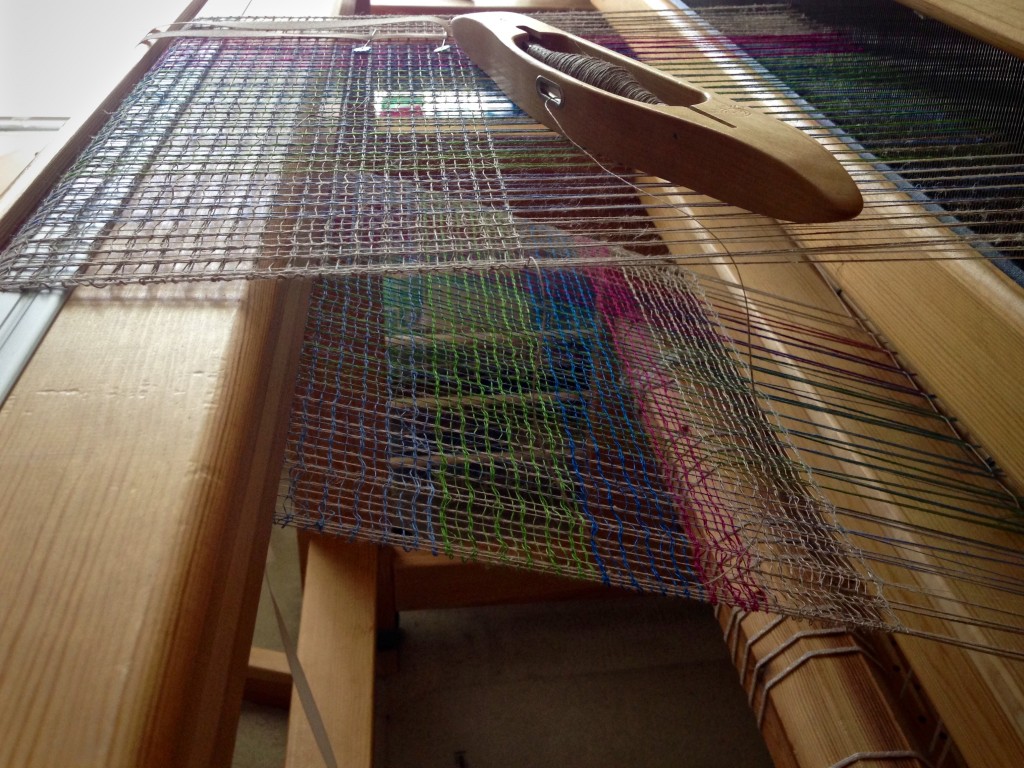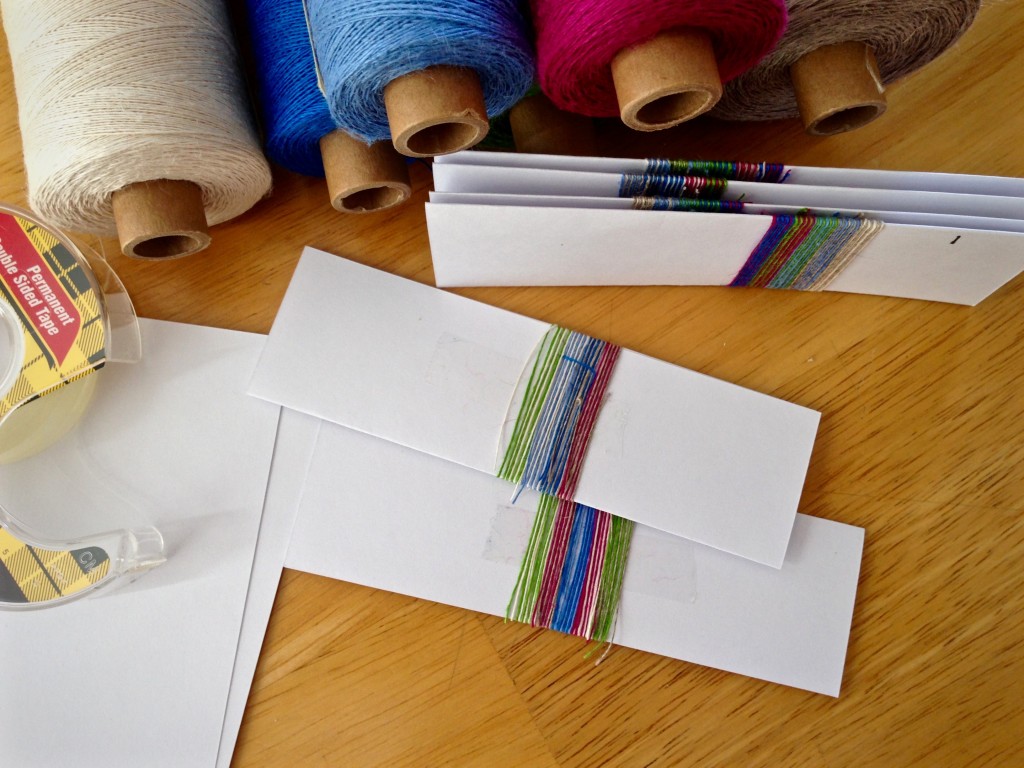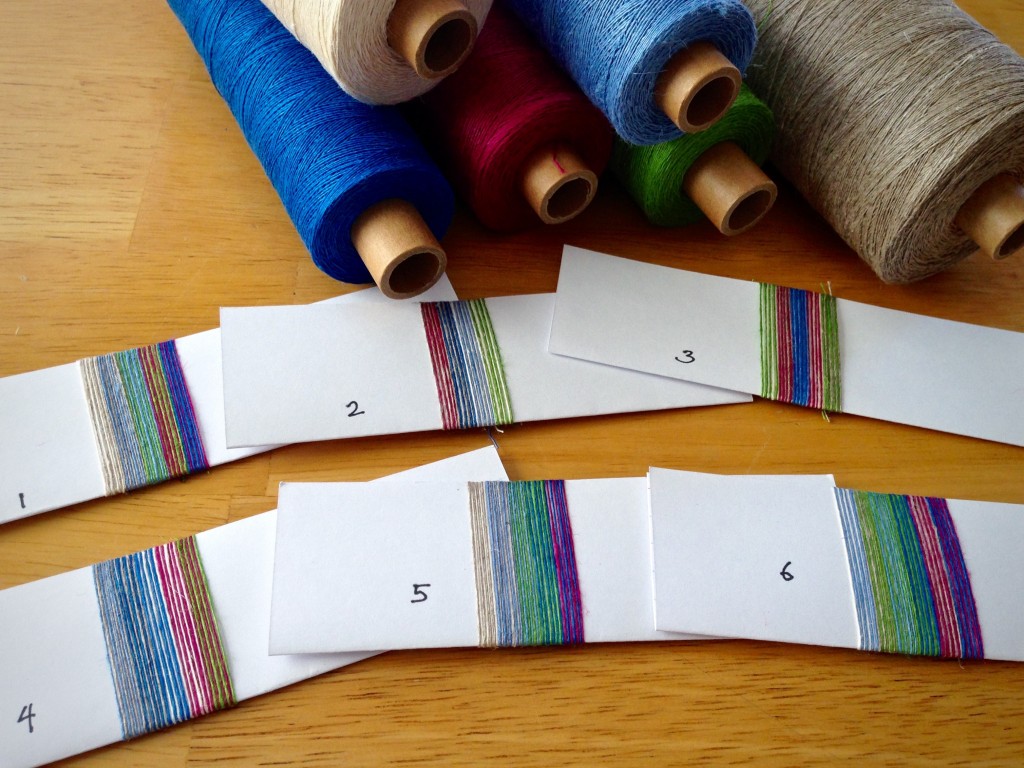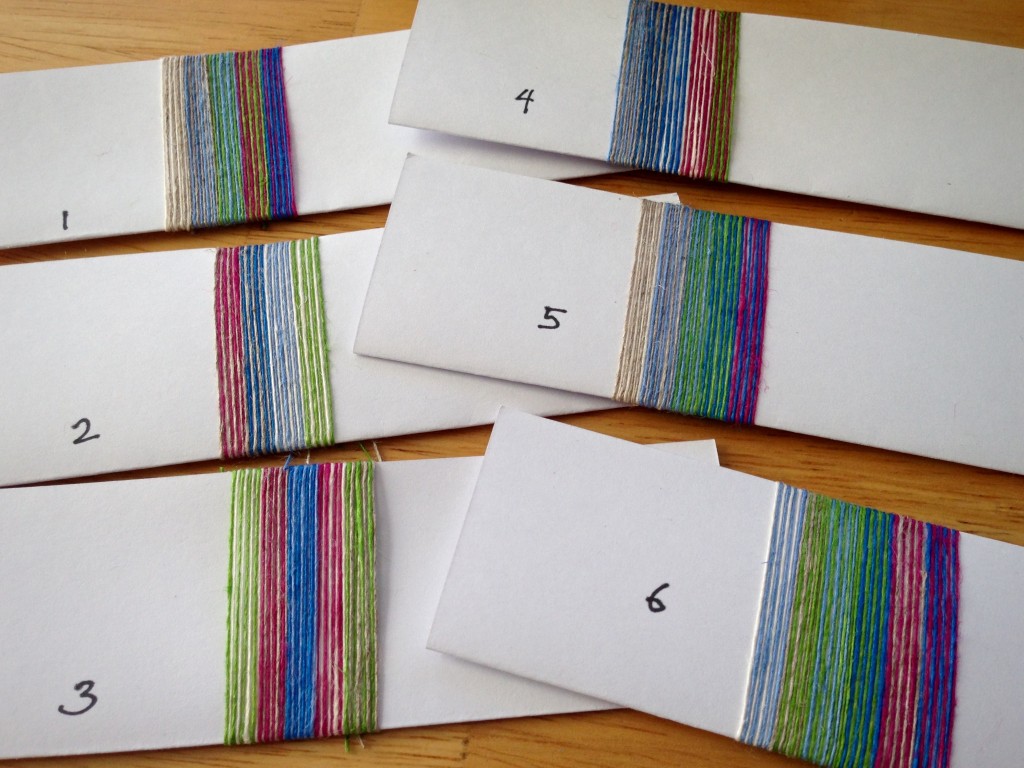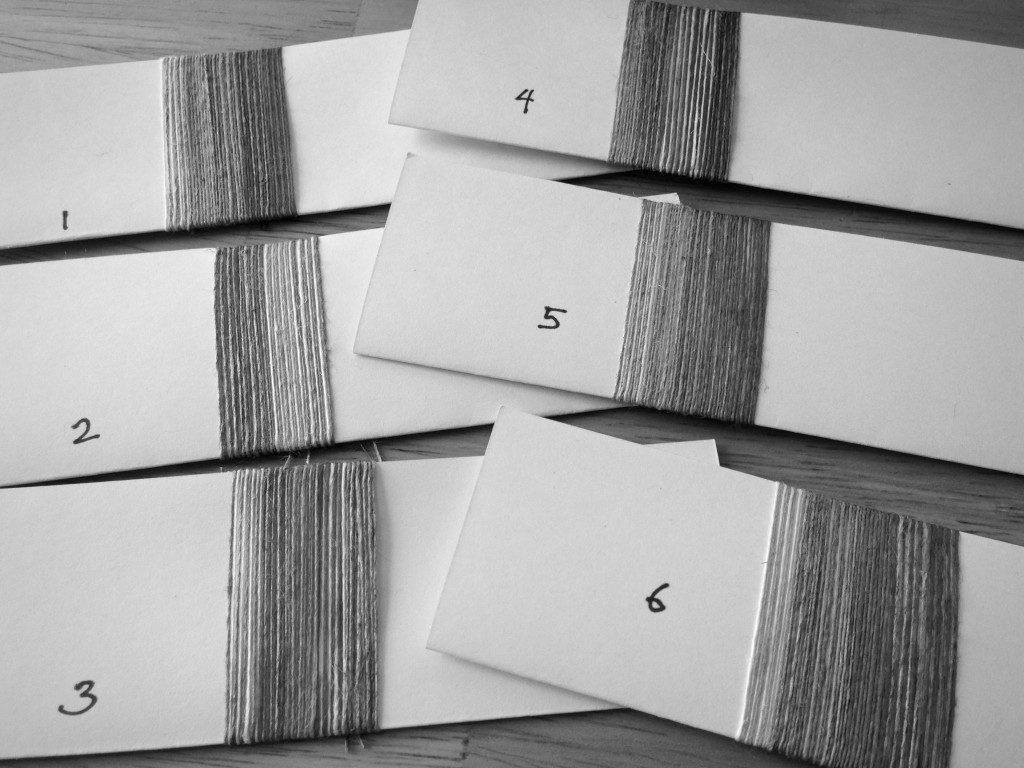Some things are black and white. Piano keys, penguins, old movies, and this new cottolin warp. Other things are not black and white. Petunias, peacocks, sunsets, and most of my weaving. Black and white is uncomfortable for someone like me who prefers to engage with color. Ten-and-a-half meters is a loooong time to be weaving without a colorful palette.
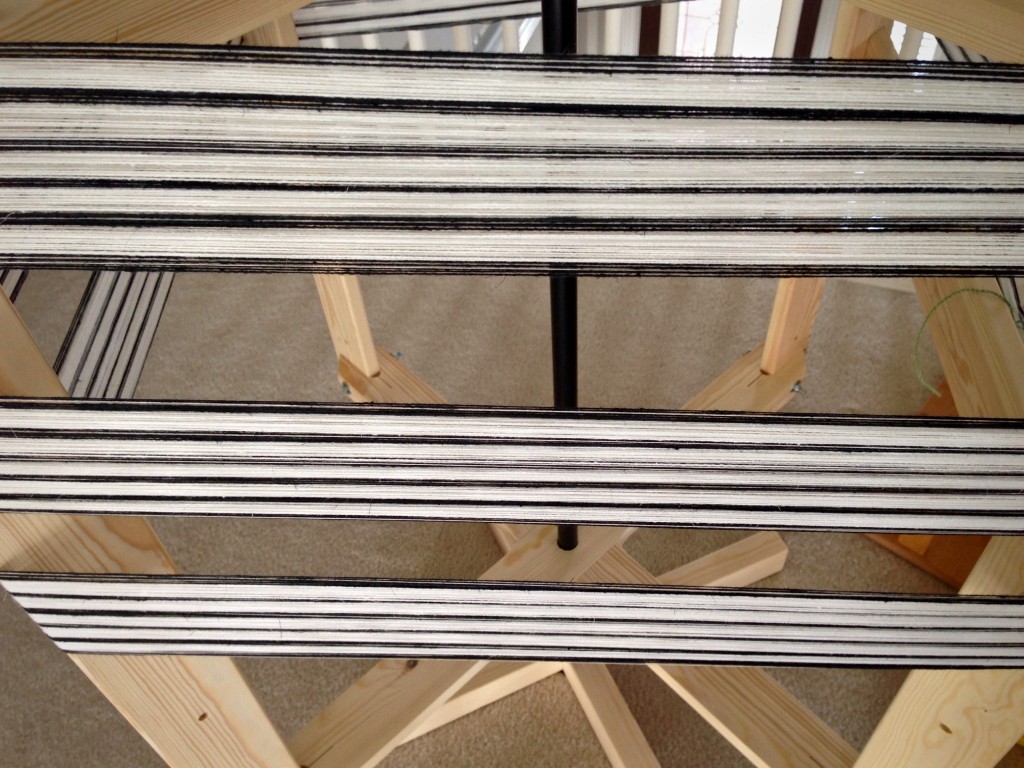
I need to add more towels to my Etsy shop, so I did some Google “research” to find popular kitchen colors. Black and white is one of the current trends. I decided to go for it. Using color for some of the weft should be enough to remind me that the black and white is temporary, and that a colorful warp will eventually be on the loom again.
When we need reminders that everything will be okay, the Lord brings something or someone into our lives to show us that he cares. God is good. Even a small sign of his goodness is enough to help and comfort us. A touch of color on a long black and white warp may, in fact, be color at its greatest impact.
May goodness cross your path.
Warped for good,
Karen

